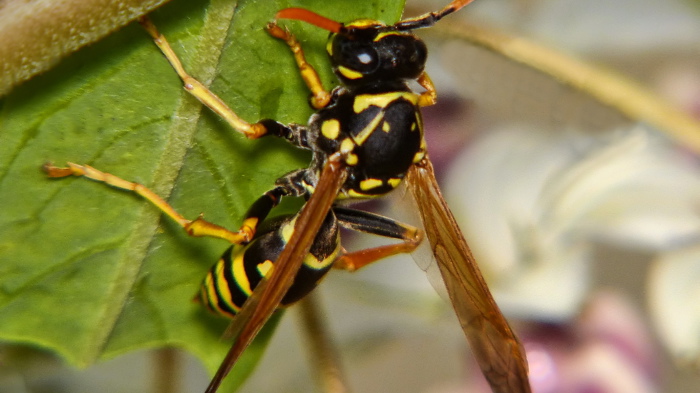Asian paper wasp


Asian paper wasp
What does it look like?
Paper wasps are distinguished by their body shape, which is slender and 13-25mm long. They have reddish-brown to black bodies with yellow rings and reddish areas on the abdomen. The wings are reddish or amber brown and they have long legs that hang down during flight. The Asian paper wasp is larger than the Australian paper wasp. It arrived in New Zealand in the late 1970s and by 1995 was widespread throughout the upper North Island. The Australian paper wasp has been in New Zealand for more than a century.
The paper wasps frequently construct their nests above ground on houses or other buildings and will also nest in trees or bushes. Large populations of Asian paper wasps occur in lowland open habitats such as shrublands, swamps and salt marshes.
Why is it a problem?
Asian paper wasps can occur at high densities of more than 200 nests per hectare and 6300 wasps per hectare. The potential impact of such high densities of these wasps on native ecosystems is a concern, although the full extent of this impact requires further research. Asian paper wasps prey mainly on invertebrates, especially caterpillars, and are capable of consuming 957g per hectare per season of invertebrate biomass. They also compete with other insects for nectar and honeydew resources.
Control methods
There are many products that can be purchased from garden centres and supermarkets that will help with the elimination of these wasps.
If you suspect or determine that you have multiple wasp nests, contact a specialist pest management firm. It is important to be aware that accidental contact or proximity with the nest will signal a threat to these wasps and they are capable of stinging numerous times.
More information
This species is not under programme management by Northland Regional Council. Please contact your local District Council if you find any wasp nests in District Council parks, reserves, cemeteries, along public footpaths and council berms. Contact Department of Conservation for any nests on DoC land.
Related information
Management programme
More images

Photo credit: Opencage

